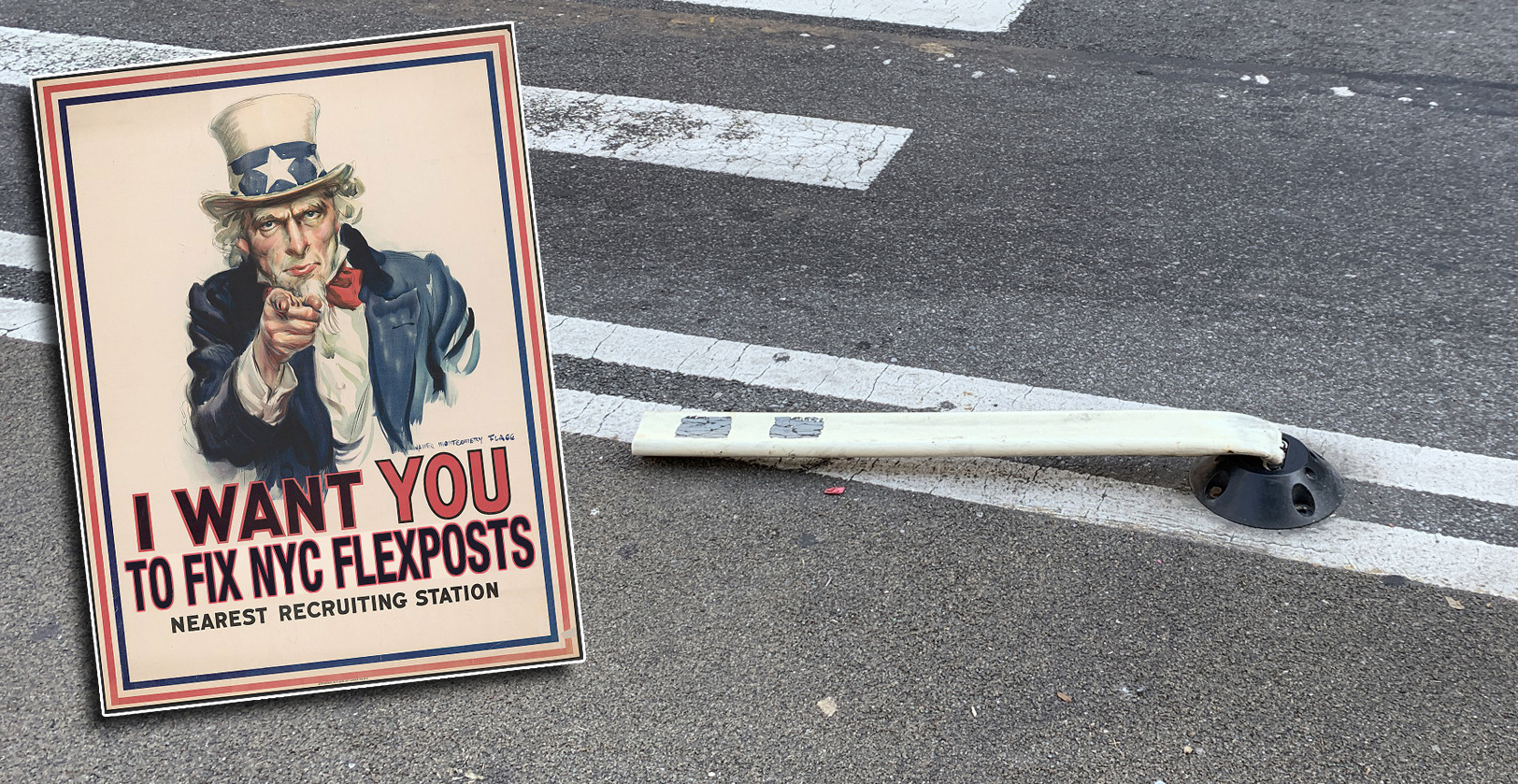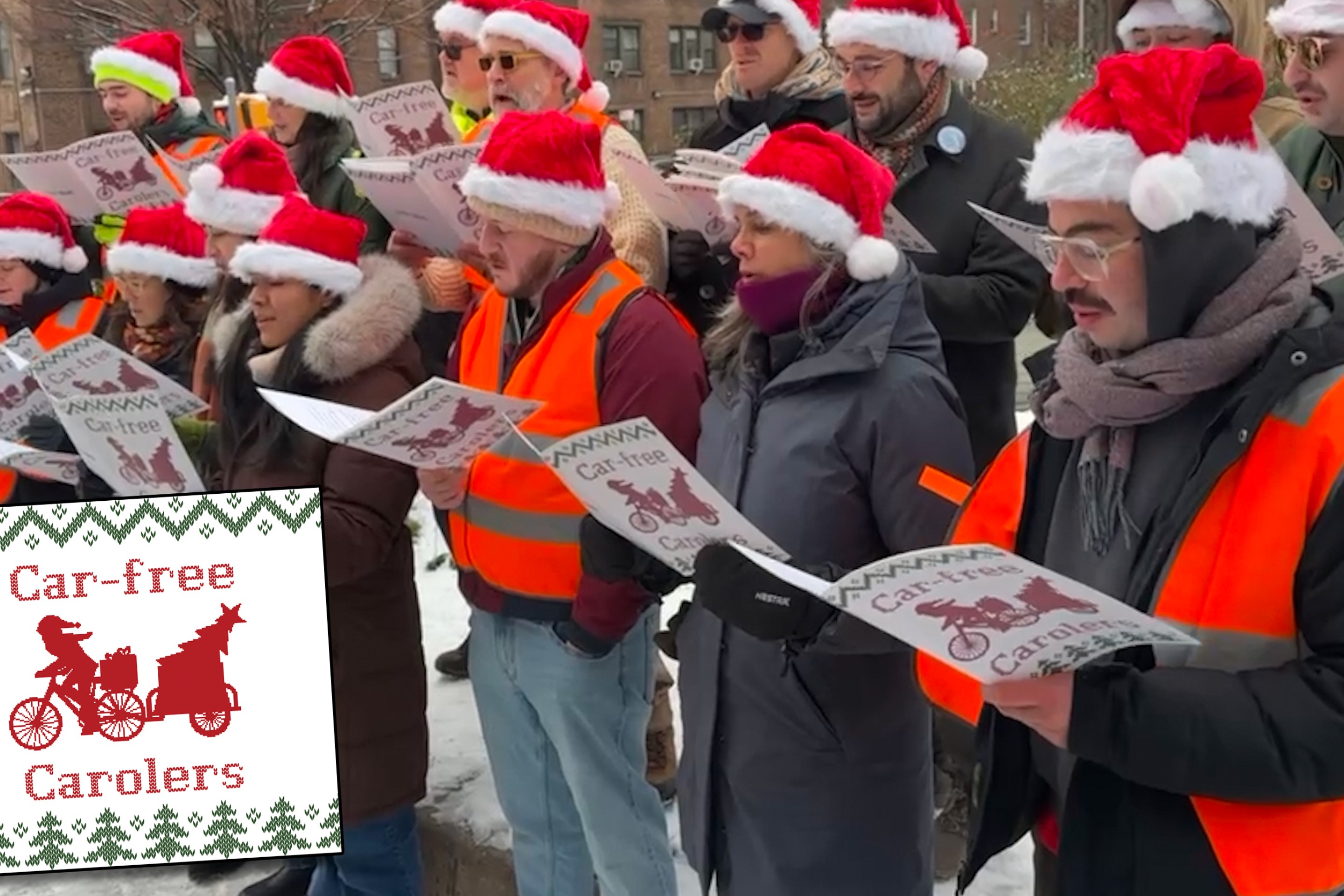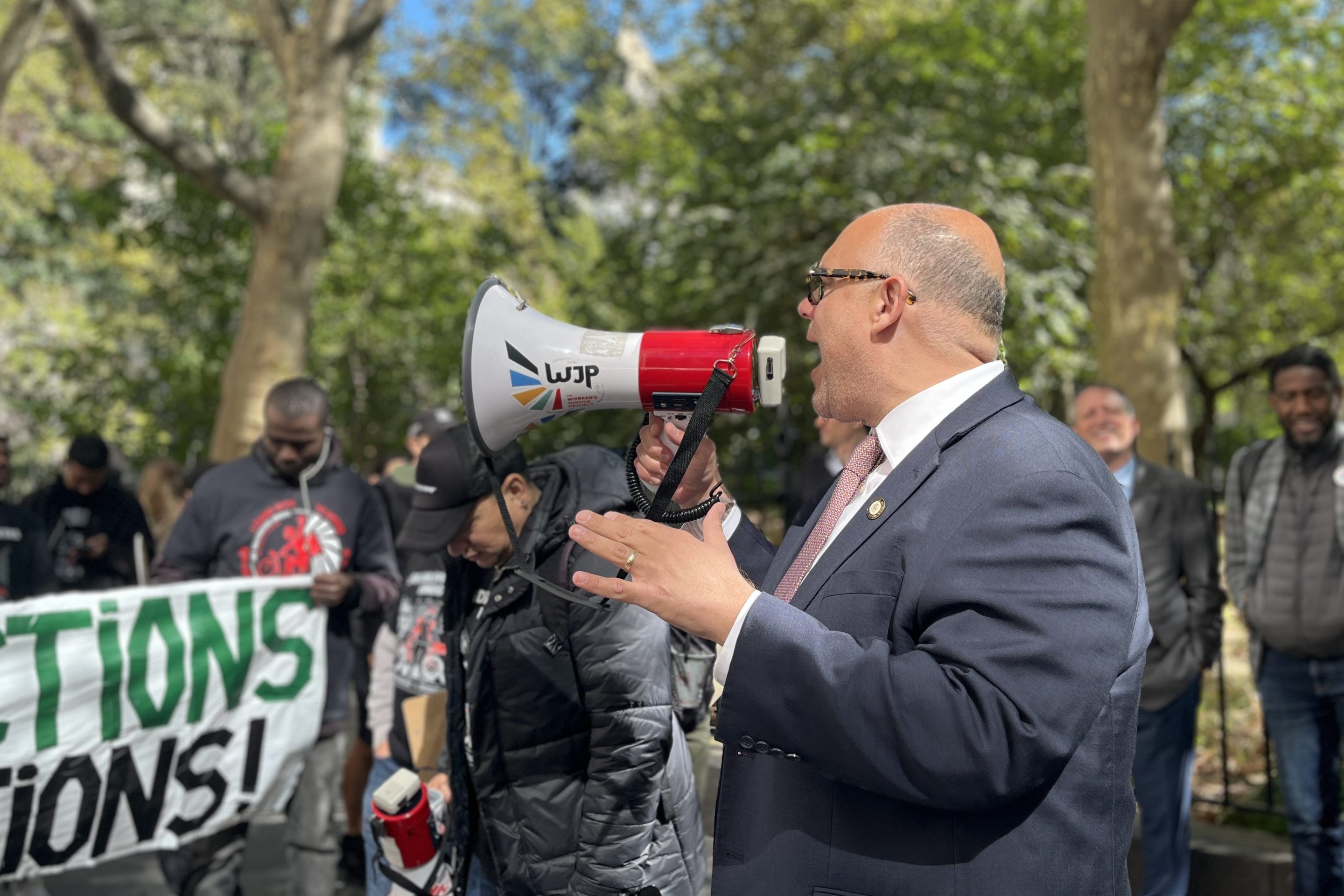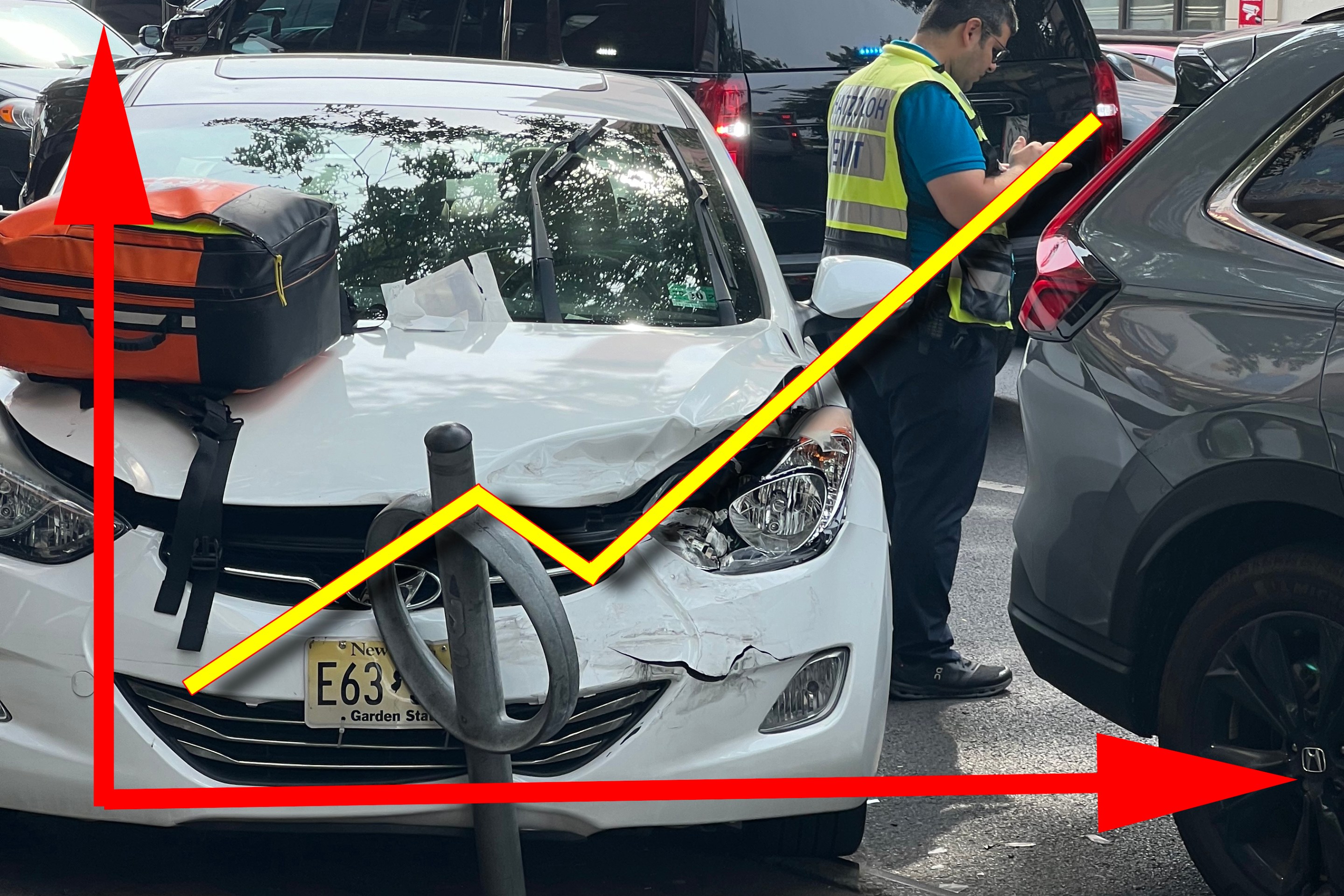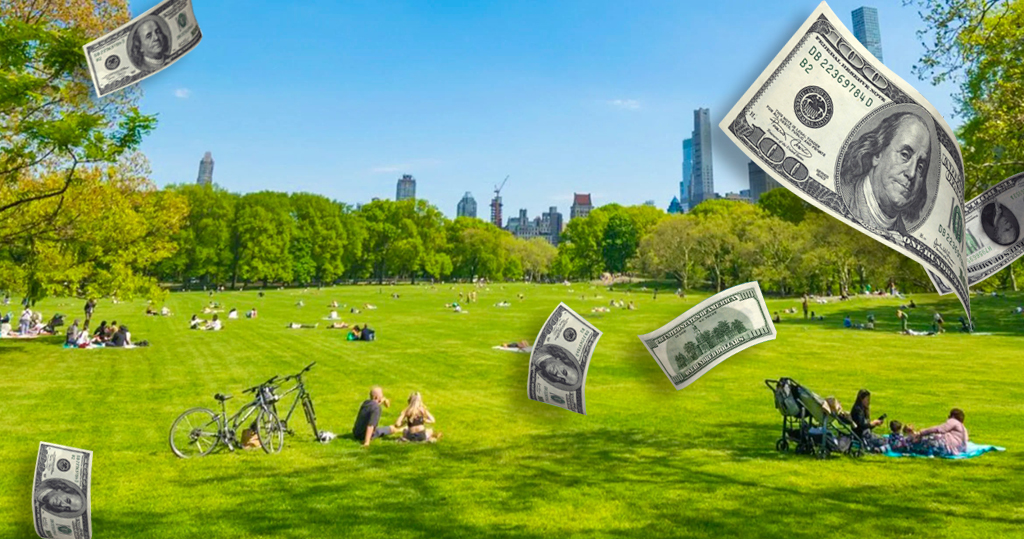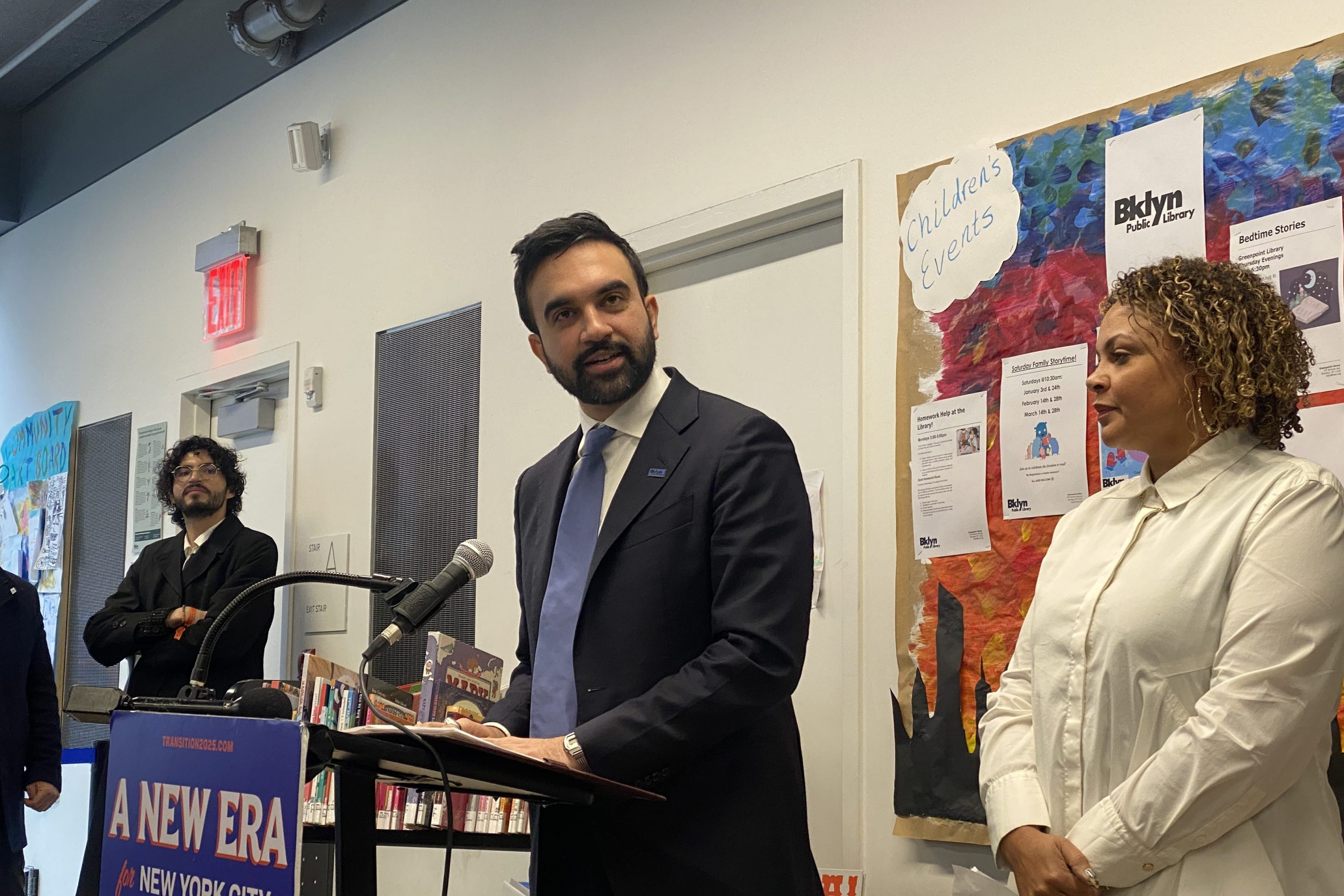New York City’s flimsy bollards can barely survive the daily onslaught of heavy duty trucks and careless drivers. That’s turned me into a man with a mission — to get as many flexposts fixed as possible.
Bollards are the city’s objet du jour for protecting all sorts of streetscape tweaks: bike lanes; curb extensions that "daylight" intersections; amenities like Citi Bike docks, outdoor seating, trash containers, and the coming wave of "microhub zones," public e-bike charging, and beyond. And as we declaw more of our roadways from the car, that only means more of them. We’re increasingly living in a bollard city.
The bollard-verse is vast, as anyone who follows social media’s World Bollard Association — which is definitely a thing — knows. Some are made of steel, like the retractable ones installed after 9/11. Others are cement; short, stout and yellow, as seen in parking lots. The city’s Department of Transportation is also piloting new types: curved bollards; bollards sticking out of hard rubber strips; bollards bunched together.
But the bollard you’ve likely seen the most is, perhaps, its simplest form: a plastic all-white vertical lineator, power-drilled into the ground. It’s typically called a "flexpost," because it’s meant to be flexible—though, in the concrete jungle, that often translates into flattened, crushed, or wiped entirely from the earth by drivers who have realized doing so will inflict minimal damage on a three-ton vehicle. Then, over time, they’re forgotten, as if they were never there — unless you say something.
This last year, I developed a hobby of fixing these flexposts — or, rather, getting them fixed, since I don’t do it myself. Instead, I’ve filled out a DOT form well over 50 times at this point to report bollards either broken or missing in action. Because city agencies are typically reactive, not proactive; crews aren’t scouring the city for downed flexposts. But in a rare victory for municipal services, if you tell them, they will come.
Here’s an example. The “mountable” bike lanes on West Street, in Greenpoint, function exactly as designed: they’re being mounted by FedEx trucks, Amazon vans, Ubers and the like. The only thing telling drivers not to do that — aside from splashes of green paint and a lifted curb — are bollards spaced a few feet apart next to the bike lane. But on a recent visit, most were destroyed.
So I went to DOT’s website, clicked "Contact the Commissioner," and selected "Bollards," which is its own category. I chose a wide swath of land: West Street from India to Quay. (You can also put addresses and intersections.) I included photos. And I told the agency exactly where action was needed: along the greenway, on the west side. The agency emailed me a week later: they replaced 14 posts two days after my request.
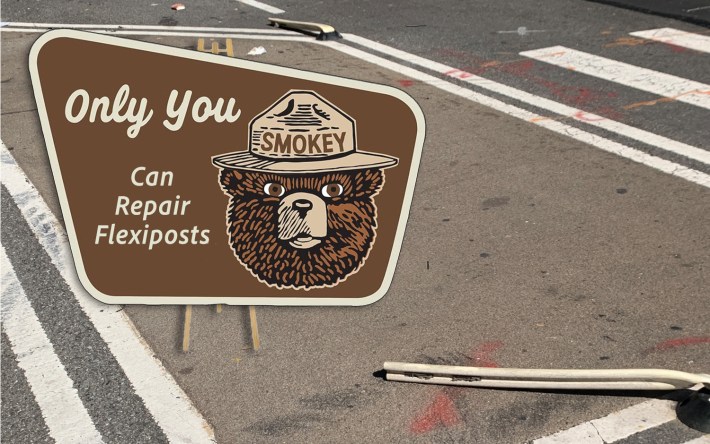
Cars aren’t always the culprit. On several occasions, a crew or contractor simply forgets to reinstall bollards after construction. I work off 14th Street in Manhattan, where the MTA is installing elevators for the subway stops underneath. But ripping up all that asphalt left the pedestrian islands at Sixth and Seventh Avenue bollard-less — until a request arrived. Similarly, a curb extension in the Meatpacking District at Washington Street was painted but not protected after a repaving. Now, it has four flexposts.
The process isn’t always perfect, though. I’ve submitted requests, only to hear that DOT didn’t see anything worth replacing. That’s when I resort to Plan B: social media. On Steinway Street in Astoria, curb extensions at a mid-block crossing disappeared after a repaving. My forms went nowhere since what existed before wasn’t there anymore. So I took a photo and tweeted at the agency. After repeated public call-outs, the crossings reappeared, bollards included.
It might seem miniscule to most, but reporting this stuff, for me, is a hyper-local means of tinkering with your city. It’s a way to leave a very tangible touch on your built environment, all while helping your fellow New Yorkers stay safer crossing dangerous intersections or cycling to their destination. Sure, you can request stop signs or stop lights, speed bumps, and crosswalks — and you should! — but bollards don’t require a study or a letter to a legislator. They’re quick and easy fixes.
It’s worth remembering, however, that bollards are tactical; they’re meant to be temporary, ahead of a permanent build-out using more durable materials, like concrete or stone. But thanks to cost, the city really struggles with leveling up to that next phase of construction. And bollards alone also aren’t the answer.
Case in point: On Greenwich Avenue in Manhattan, curb extensions see their bollards squashed regularly by parked ambulances and trucks. I kept replacing them but it didn’t matter, because the curb extension was still basically useless. So I tweeted at DOT; they later installed a bike corral and a few boulders to give the bollards an extra boost. (I’m working on the other side of the avenue now.)
Mayor Adams’s proposal to double the dollars spent each year on “hardening” intersections—which are a proven remedy for reducing pedestrian injuries, per DOT itself—will help. But until the city dedicates real resources towards quite literally cementing these new spaces into the ground, bollards will dominate the city we live in. We might as well try to make them work.
